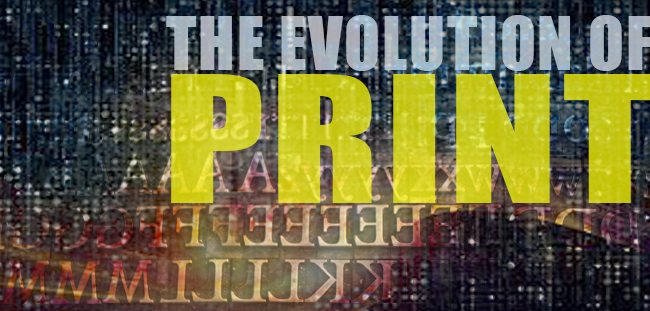
Print in the World of Marketing, Yesterday and Today
Here we have reached the last, yet probably most relevant, segment of Print as a Lifestyle Choice. Last month we talked about how print revolutionized the world. It’s true that Gutenberg changed the course of human civilization with his invention of the printing press. How print has affected humans over the years is so immense that it’s unquantifiable. From the writings on cave walls, to the first known story written on clay tablets 3,000 years ago, to Gutenberg’s printing press, to the printing presses of today, there is one thing about print that has remained constant throughout history: it’s influence on humans.
From the moment we set foot on this Earth, humans have longed for the experience of print. That is it in a nutshell–experience. Print was and remains so to this day an experience. Do you recall in Part I how Linden’s research had concluded that touch is an essential element to the development of the human brain? Just as the history of print in human civilization has already revealed to us, the research of today tells us that print is better able to connect to the human brain than any other form of media (Check out Neuroscience shows Benefits of Paper).
As of today, the way consumers retrieve their information has shifted towards the digital. We are in the mists of yet another information age. The internet is somewhat like the Wild West at the moment. Marketers are trying to find their place and in doing so many have wondered what roll print should now play in their marketing strategies. Perhaps consumers wonder the same thing; for example, when it comes to making a decision between purchasing an e-book online or a physical copy from the local bookstore.
The internet has given us some options, there is no denying that. Yet, it has not served as a replacement for print. In fact, it has served as a partner to it. Even emerging novelists and writers will tell you they started out writing e-books before moving on to the world of print publishing. When combined, print and digital are powerful allies. If this wasn’t the case, we would not see companies, such as Bonobos, that started off in the world of e-commerce, but decided to expand their marketing reach through the traditional methods of print catalogs. For as many companies that have decided to leave print behind, even more have decided to embrace it. If you ask me, that’s pretty amazing considering this so called “digital shift.”
Without delving too deep here, it is safe to say that print is tied in tightly not just to our history and our brains, but also to our economy through print and paper production and our overall health and wellbeing as people. The power behind print far exceeds the realization of many modern print-bashers. Just as neuroscience points towards touch as being an extension of the brain, print too is an extension of humans. Without it we would be lost, yesterday, today, and tomorrow.
 Jennifer Grace is a proud to be millennial who works as a Sales & Marketing Specialist at The Dingley Press. Dingley specializes in catalog printing and Jen is lucky enough to be stationed in the manufacturing facility where the presses run 24/7. When it comes to print and catalogs, one thing is for sure, Jen does not lack enthusiasm. To read more of her articles you can check out Dingley’s blog site or connect with her on Twitter, LinkedIn, and Facebook.
Jennifer Grace is a proud to be millennial who works as a Sales & Marketing Specialist at The Dingley Press. Dingley specializes in catalog printing and Jen is lucky enough to be stationed in the manufacturing facility where the presses run 24/7. When it comes to print and catalogs, one thing is for sure, Jen does not lack enthusiasm. To read more of her articles you can check out Dingley’s blog site or connect with her on Twitter, LinkedIn, and Facebook.











